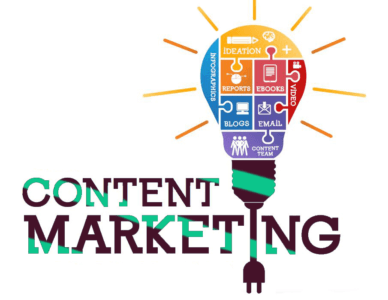
Is Your Content Marketing Effective?
Creating good content is tough. Really tough—especially when you’re trying to meet B2B demand generation deadlines. How many of us have created me-too pieces of content that we aren’t proud of—content pieces that have been blasted to the world in the hope that we will get a few more leads?
Content Marketing Institute performed a survey recently that showed 88% of B2B marketers use content marketing as part of their strategy but only 30% of those programs are effective in driving conversions.
Only 30%! You know why? Because to inspire your readers you have to care about them and what you say has to come from a place of truth. In fact, your top challenge shouldn’t be about generating mountains of content, but creating content that inspires your readers. And you can’t do that if you’re not thinking strategically.
Here are some things to consider when creating a content marketing strategy:
Understanding the “Why”
Before you create another checklist of assets, ask yourself why does the world need another piece of content? The answer shouldn’t be because I need more leads. It should be more along the lines of how that asset will make a difference in the lives of your prospects. Will it be relevant to them? Will it provide solutions to their needs? Will it uplift them and inspire them?
Thinking through these questions helps you move away from reacting to your company’s short-term requirements to focusing on a strategy that allows your prospects to connect with your brand. Rather than creating half-hearted standalone content pieces that are disconnected from your brand identity, you can create a list of assets that map to your messaging, reflects the voice of your brand and more importantly, solves your client’s problems.
Identifying Campaign Themes
Rather than creating a piece of ad-hoc, one-off content quickly in the hope of mediocre results, think about how your content fits into your campaign themes. Hopefully you have some campaign themes defined. If you don’t know how to create marketing campaigns with focused messages and themes, you can check out this checklist.
Once you know what themes your content will fit into, you can make sure that it is tailored for the message and persona associated with that campaign. This way, you will have a series of content pieces that you can use to nurture your customers. You can then take advantage of the psychology of repetition to gain traction in the market place.
Knowing Your Audience
Not every asset will appeal to every person. You have to assess whether your audience will enjoy the asset you have created. There are two main things to take into consideration. First, does the messaging appeal to the audience and if it doesn’t how can we improve it? Second, what type of content would the audience be interested in? For example, a CEO might be willing to take a quick look at a 30 second high level video whereas a developer would be more interested in an article covering tips and tricks. Know your audience so you can create the right asset for them.
Mapping to Demand Generation Funnel
Think about your buyer’s journey as you layout the content. How will they consume your assets? Nowadays, most people do their own research online before they even talk to a sales representative. When you create a checklist of content make sure that you highlight where an asset fits into the demand generation funnel and the nurture stream. For example, a Gartner report which is a thought leadership piece would fit into the awareness phase, whereas a how-to video about your product would be later in the funnel, most likely the consideration or even the purchase phase.
Once you map your content to your funnel, it will be much easier to use it for nurturing purposes, online, and as part of outbound and inbound campaigns.
Remembering Your Existing Clients
Sometimes startups seem to be so focused on getting the next big enterprise deal that they forget that their existing clients matter too. In fact, existing customers can be the lifeblood of your business as they continue to renew and refer your services.
Providing useful content to existing clients is invaluable to ensure that they are satisfied with your services and continue to subscribe to them. Content that you create during product launches, helps your customers stay in tune with your innovations and continuously upgrade.
Having educational and thought leadership blogs that customers could refer to can work well in keeping your customers engaged. You can then send a monthly newsletter to update them on the recent industry news and product updates.
If you provide your existing customers with valuable content you will see better retention rates and ultimately more upgrade and up-sell revenue.
Educating Your Free Trial Prospects
If you have ever downloaded a free trial of a product to get absolutely no help in setting it up you know how painful of an experience it can be. You probably ended up frustrated and abandoned the tool. If you have a product that can be downloaded as a free trial, then your content strategy should include a series of helpful emails that provide guidance on how to get started with the trial. Your emails can include tips and tricks, links to demos or webinars, and support contact information.
Once you have created a list of all these types of assets, how they fit into the demand generation funnel and the buyer’s journey, and how they can be utilized, you can create a checklist which can be used to increase brand awareness and ultimately conversions.


No Comments